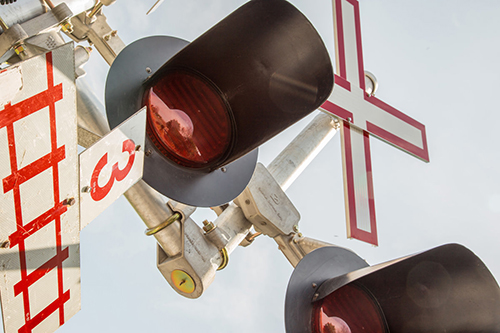The signalling system and winter precipitation

Snow, rain, ice and the impacts of winter on the signalling system
Learn how exo ensures your safety when track signalling is affected by winter weather conditions such as snow, freezing rain, fog, and more.
What is signalling?
Signal lights are used to control train traffic, notably when trains are running in the same direction, on the same track. For example, the exo1 Vaudreuil-Hudson line is divided into sections (called “blocks”). The signal lights tell a train when it must stop at a block or when it may proceed to the next section.
Did you know?
The majority of signalling panels are owned by our partners (CN) and (CP).
Signalling and winter precipitation don’t mix well
Signal lights are powered by electrical circuits in the rails. In winter, precipitation such as rain, snow and ice can disrupt their operation and cause short circuits in our systems.
Caution above all!
In this situation, exo follows a three-step process to ensure your safety.
- When a signal light no longer operates correctly, it stays red. This means your train is required to stop.
- The train operator contacts the Rail Traffic Control Centre (RTCC), which sends an inspector to the site.
- Once the train is authorized to proceed, it runs at a reduced speed of 15 mph (24 km/h) until the signal is functional, in order to stop in time in the event there is an unusual occurrence on the track.
This situation may result in delays, but our priority is to ensure your safety until your arrival.
Did you know?
Poor visibility of signals due to snow, strong rain or fog requires locomotive engineers (who drive the train) to reduce their speed.
To learn more about the other actions taken by exo during the winter, read the winter train plan.
